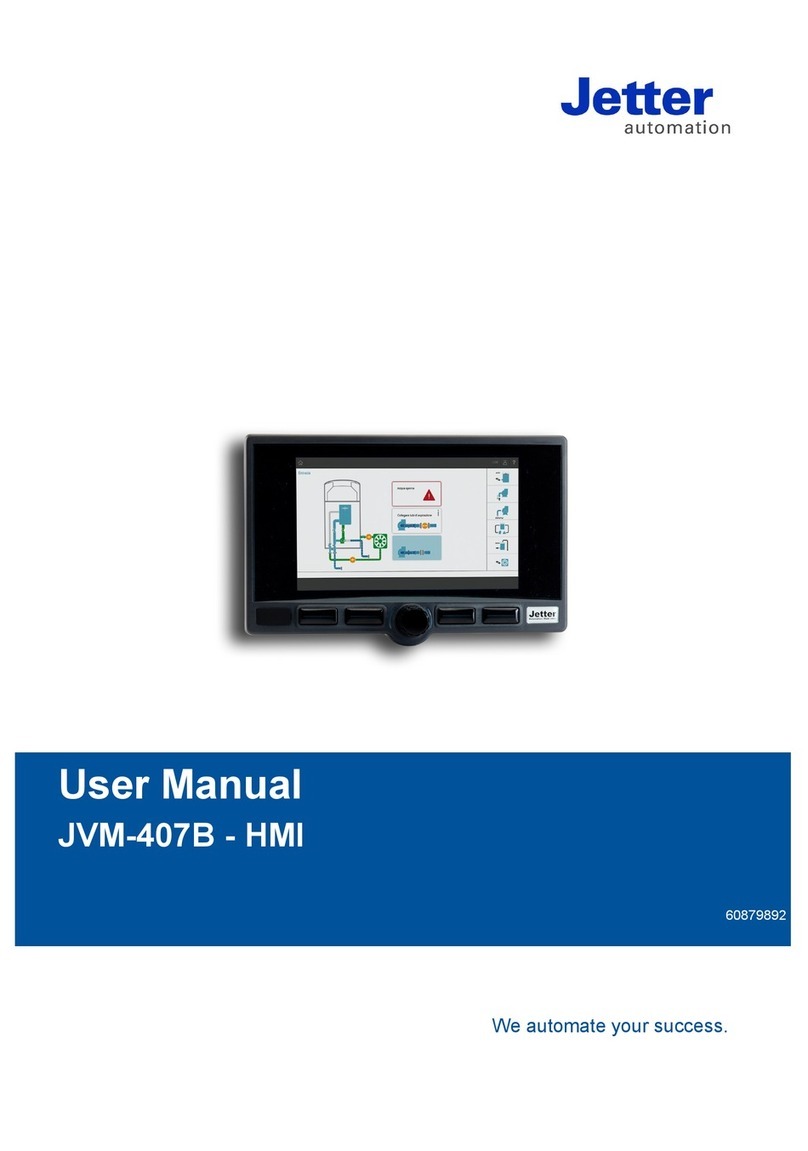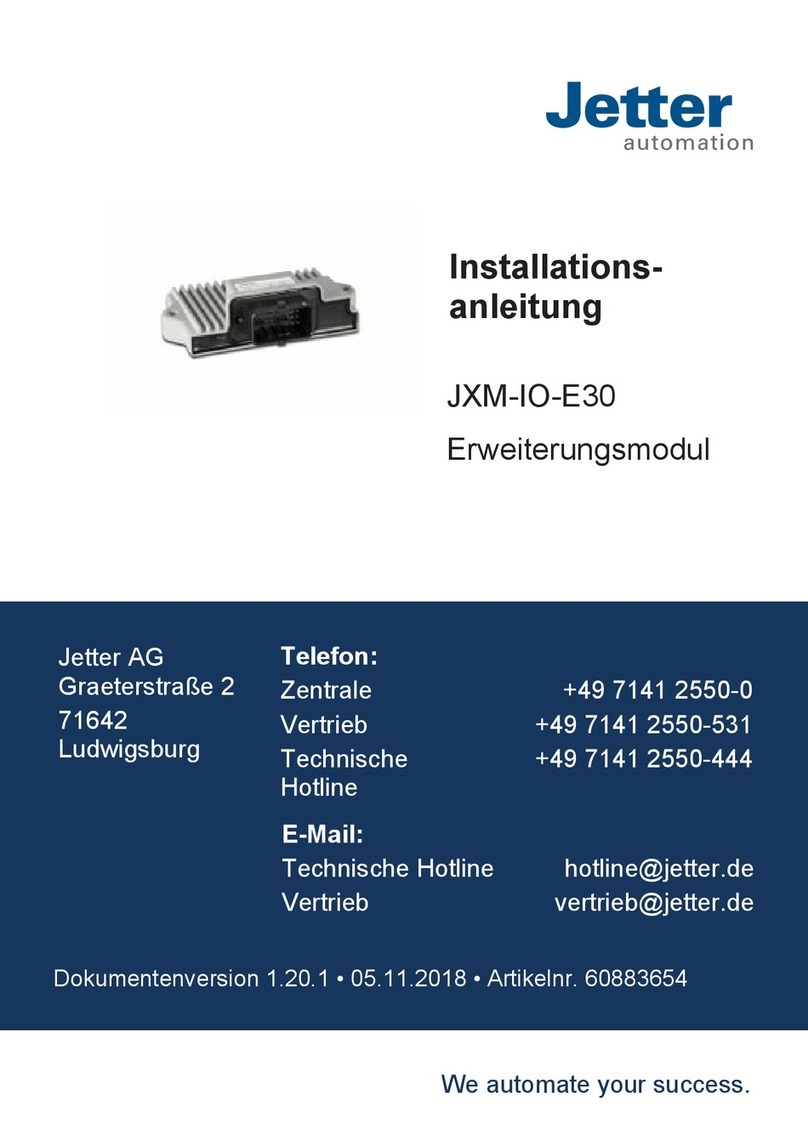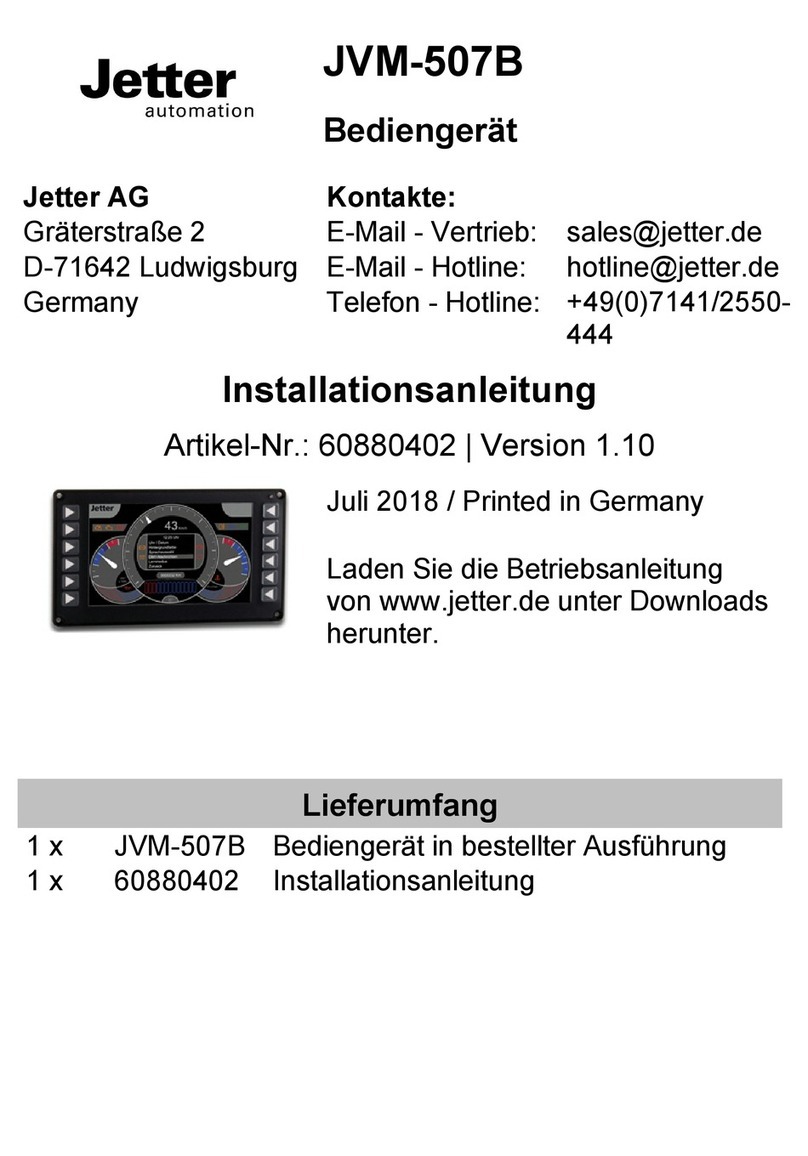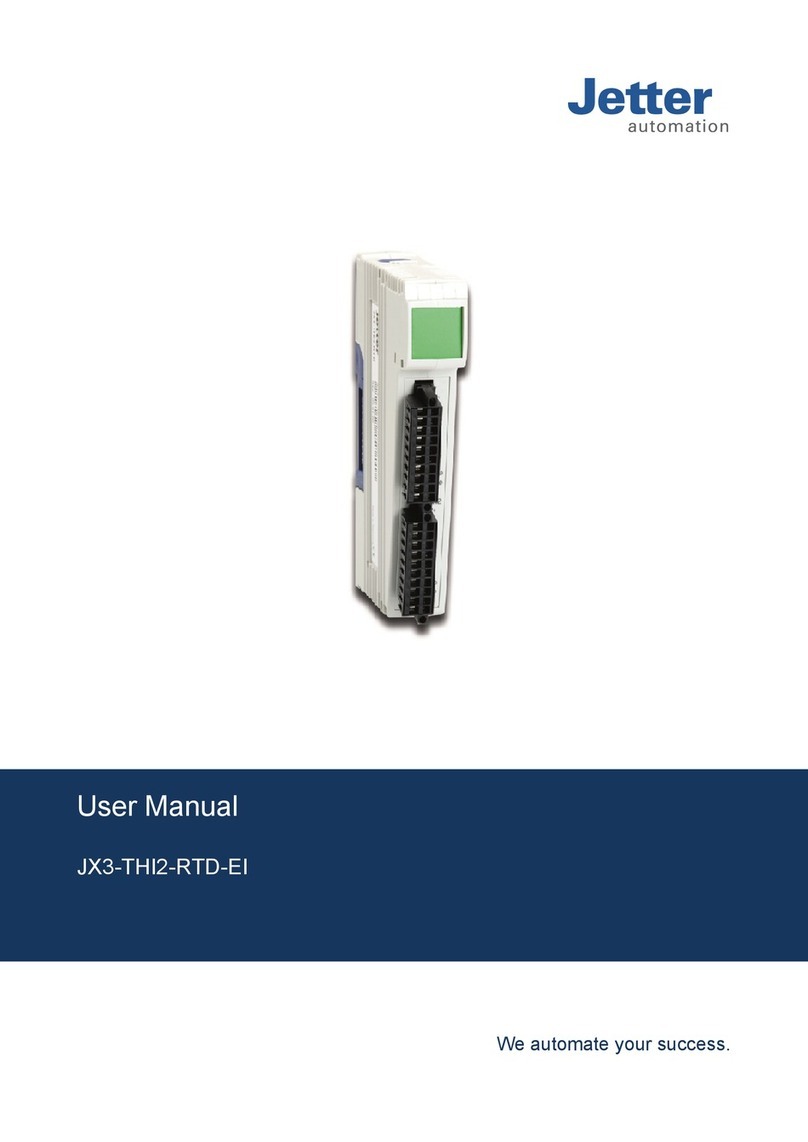
Jetter AG Table of Contents
jxm-io-ew30_ba_2151_manual iii
Table of Contents
1 Introduction ......................................................................................................................................... 5
1.1 Information on this document .......................................................................................................5
2 Safety ................................................................................................................................................... 6
2.1 General information......................................................................................................................6
2.2 Purpose ........................................................................................................................................6
2.2.1 Intended use.....................................................................................................................6
2.2.2 Usage other than intended ...............................................................................................6
2.3 Warnings used in this document ..................................................................................................6
3 Product description ............................................................................................................................ 8
3.1 Design ..........................................................................................................................................8
3.2 Features .......................................................................................................................................9
3.3 Diagnostic capability via LEDs .....................................................................................................9
3.4 Nameplate ..................................................................................................................................10
3.5 Scope of delivery........................................................................................................................10
4 Technical specifications................................................................................................................... 11
4.1 Dimensions.................................................................................................................................11
4.2 Mechanical specifications...........................................................................................................11
4.3 Electrical properties....................................................................................................................12
4.4 Environmental conditions ...........................................................................................................12
4.5 EMC values ................................................................................................................................13
4.6 Outputs.......................................................................................................................................14
4.6.1 Current diagnostics at the outputs..................................................................................16
4.6.2 Overcurrent shutdown at outputs ...................................................................................16
4.7 Inputs..........................................................................................................................................16
5 Mechanical installation..................................................................................................................... 19
5.1 Requirements for the installation location ..................................................................................19
5.2 Allowed mounting orientations ...................................................................................................19
6 Electrical connection ........................................................................................................................ 20
6.1 Pin assignment...........................................................................................................................21
6.1.1 Printed Circuit Board ......................................................................................................21
6.1.2 DIP Switch......................................................................................................................24
6.1.3 5-pin male connector M12..............................................................................................25
7 Identification and Configuration...................................................................................................... 26
7.1 Identification ...............................................................................................................................26
7.1.1 Device information..........................................................................................................26

































